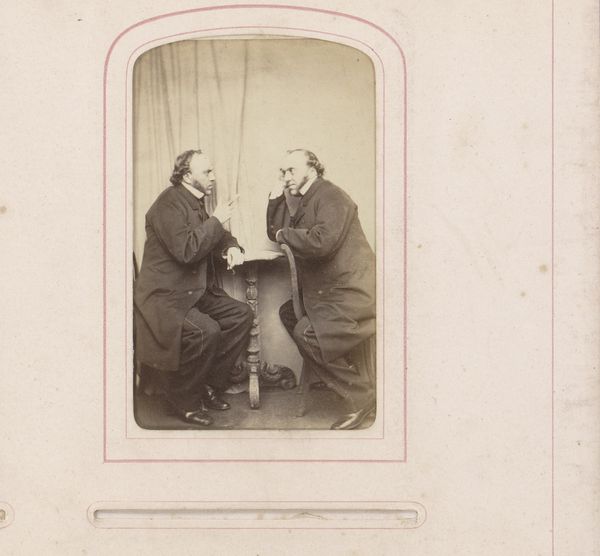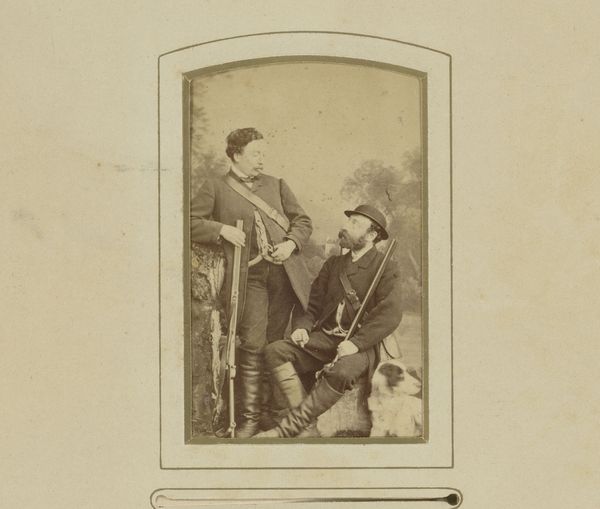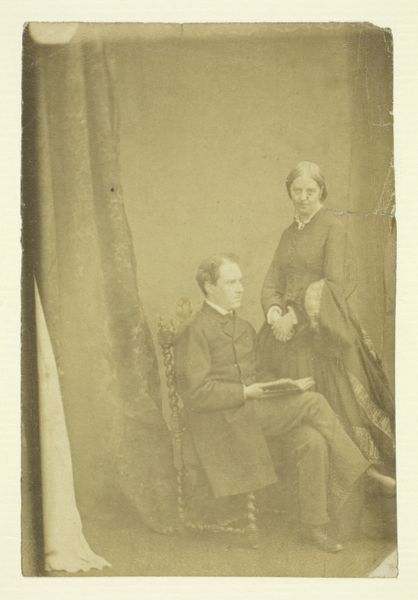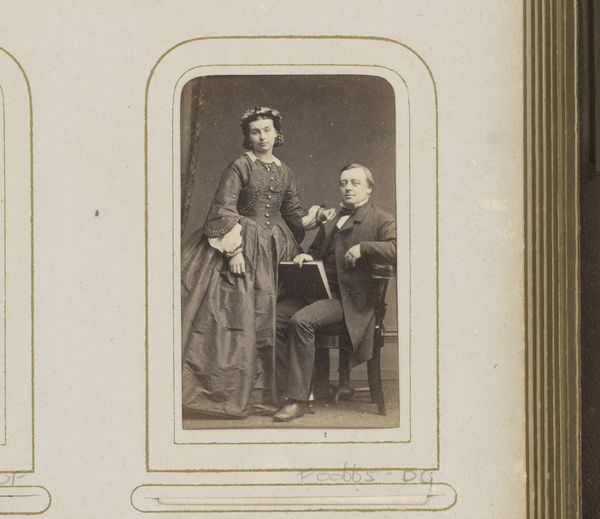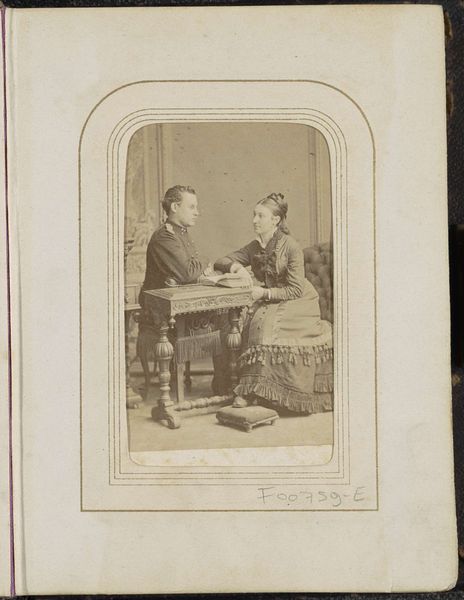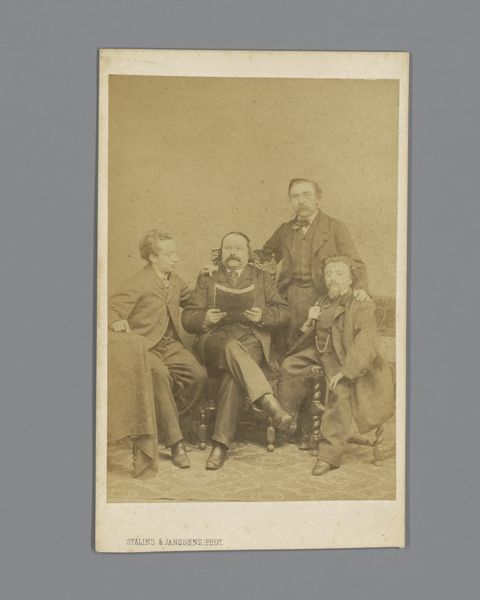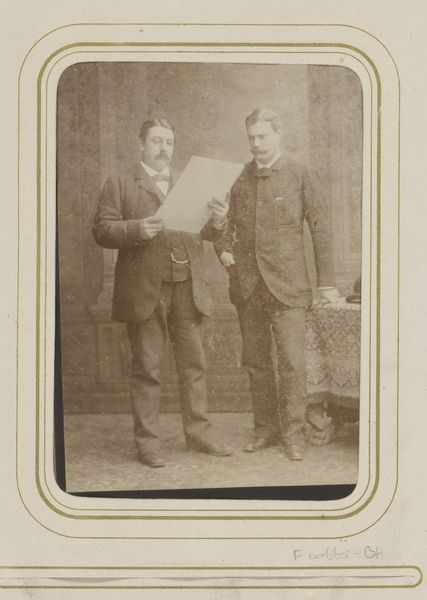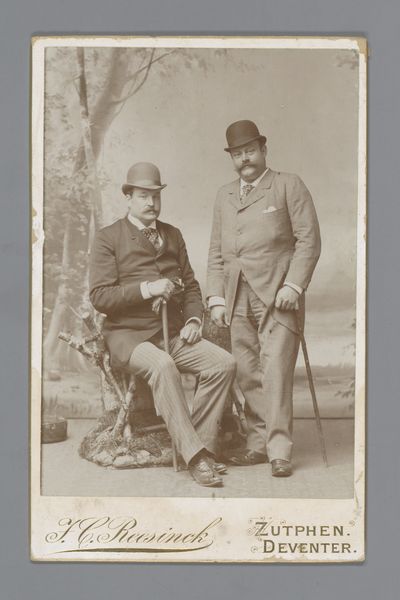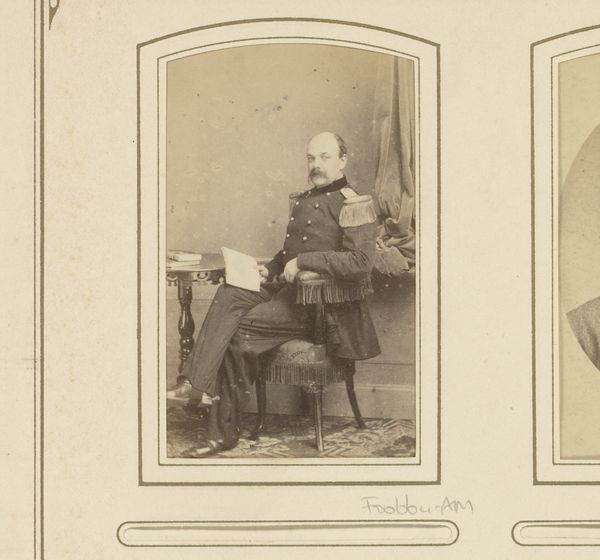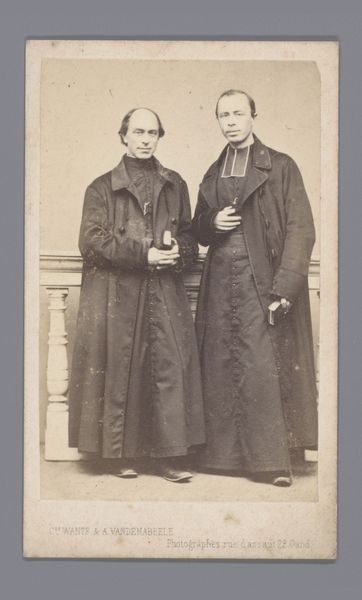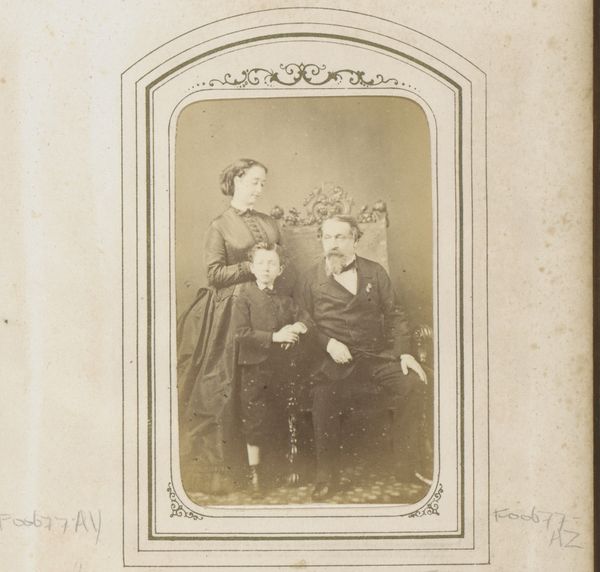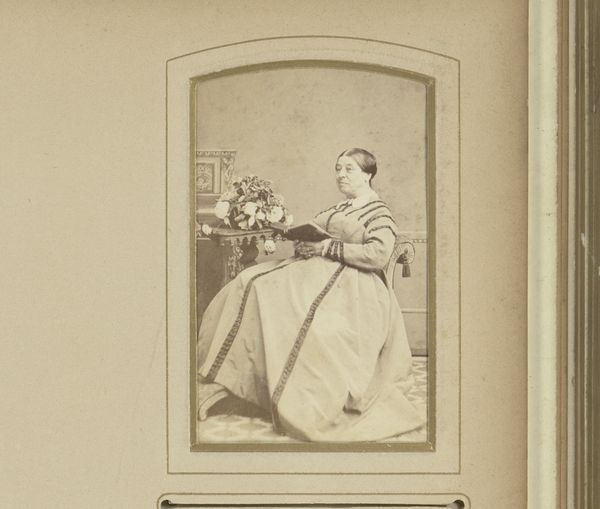
Portret van twee onbekende mannen aan tafel waarvan een een lange pijp rookt 1879 - 1886
0:00
0:00
photography, gelatin-silver-print
#
photography
#
gelatin-silver-print
#
genre-painting
#
realism
Dimensions: height 104 mm, width 63 mm
Copyright: Rijks Museum: Open Domain
Curator: This gelatin-silver print, entitled "Portret van twee onbekende mannen aan tafel waarvan een een lange pijp rookt," which translates to “Portrait of two unknown men at a table, one smoking a long pipe,” was created between 1879 and 1886 by Johannes Hendrikus Kramer. What are your first thoughts? Editor: There’s an incredible stillness to it. The somber tones create a very particular mood. Look at how the artist uses light to emphasize the subjects' features. It’s wonderfully composed. Curator: The creation of such a photograph in that era involved significant material and social processes. Photography was still a relatively novel medium and required expertise, expensive equipment, and a studio setting. Editor: Yes, and despite the technology's constraints at the time, consider the careful arrangements within the composition, that sharp contrast where their forms meet the neutral backdrop. See how that dark clothing nearly merges with the darkness behind? Curator: The men appear to be bourgeois gentlemen. Their garments and smoking habits signal an upper class indulgence in leisurely pastimes. We also should consider the relationship between photography and realism—the quest to capture real-life moments. Editor: Precisely! The image embraces this new Realism movement of that time, steering away from idealizing its subjects. The raw honesty gives us insight into that time. I appreciate its aesthetic choices; how the texture and the material are rendered almost tangible, and also I see the underlying order. Curator: True, but that order may have been shaped by societal conventions surrounding class and portraiture. The act of commissioning such a photo reflected one’s social status, a certain participation in a modern consumer culture where representation and image played increasing roles. Editor: Perhaps. Either way, it's more than just a document; Kramer created something resonant, I'd say, a real harmony. Curator: Indeed. Considering this piece, one gains perspective on the cultural meanings of art. The labor of creation, from posing subjects to handling the chemicals and equipment, becomes just as worthy of reflection as the finished product. Editor: I appreciate how looking at this work makes us reflect both on artistry, and also on life in a different time.
Comments
No comments
Be the first to comment and join the conversation on the ultimate creative platform.
